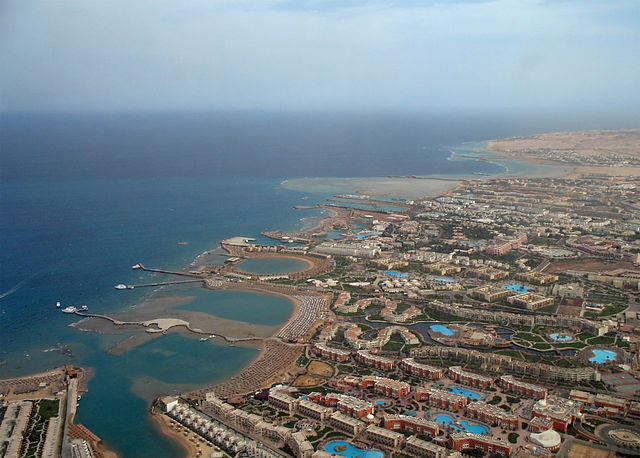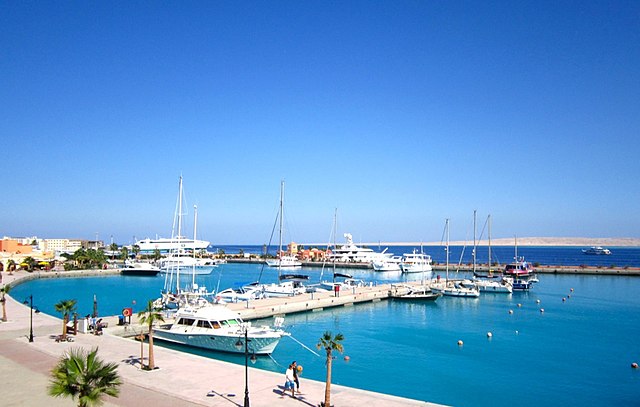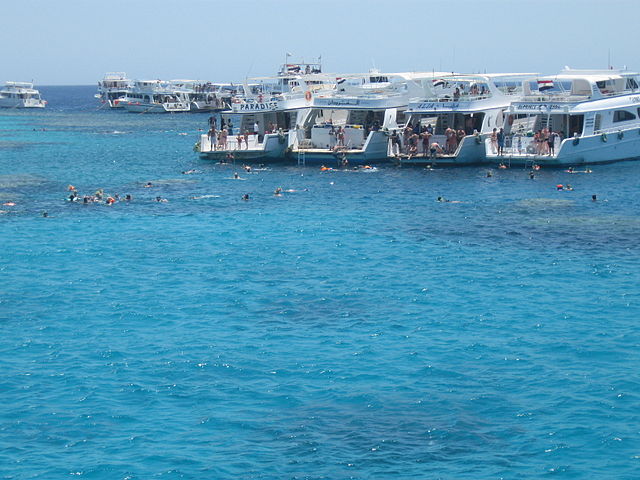Hurghada - Egypt's Romantic Red Sea Resort
By: Habeeb Salloum/Arab America Contributing Writer

Looking at my itinerary for a two-weeks of what he said was a hectic tour of Egypt, my friend remarked, “I have made this trip. It’s a great adventure. But what you will enjoy most are your four days at Hurghada on the Red Sea. He went on, “You’ll remember the tranquil days spent in the serene atmosphere of this resort with its fine lodgings, edging a fairyland of coral reefs.”
After spending two rushed days in Cairo, Egypt’s capital, and Africa’s largest city, we left for Hurghada. I remembered my friend’s words as we stopped at the Arabia Hotel – a sprawled-out complex of sparkling-white domes, crowning oriental architecture. It appeared to be a fairytale-like dwelling place that seemed to jump out of the Arabian Nights.
Egypt’s Red Sea coast runs north from Hurghada to the Gulf of Suez and south to the Sudanese border. To the west of the coastline lies the mineral-rich, red-tinted mountain range which inspired in antiquity the name Mare Rostrum (Red Sea). Today, these relatively unexplored mountains share with the few camel-trading Bedouin tribes, gazelles, ibexes and a number of monasteries, the vast empty spaces.

Edging this almost barren land, the radiant-blue waters of the Red Sea are dotted with coral reefs, teeming with underwater life. For snorkellers, the reefs are an underwater wonderland – a living tapestry of vibrant corals and exotic sea creatures.
These waters were once fringed by ancient ports with a rich history, stretching back to pharaonic times. Ships have sailed the Red Sea since it was the main trade route to the Indies for Ancient Egyptian, Phoenician, Greek, Roman and Arab traders. In those times, ships voyaged for the ports of el-Quseir, and Berenice carrying manufactured goods and returned bearing elephants, gems, silk and spices. After the opening of the Suez Canal in 1869, the Red Sea continued as an international trade route – the short pathway to India for European travellers.
Today, resorts have taken the place of merchants, pilgrims, shipwrecks, and smugglers. Of the four main retreats on this historical Egyptian coast, Hurghada stands at the top. Thousands of tourists pour in from western Europe – mainly Germans – and lately, to some extent, from the Far East and North America, into this modern Egyptian resort.
Founded in the 20th century, Hurghada has grown from a once tiny fishing settlement to become the foremost resort on Egypt’s Red Sea coast that caters to tourists. Its seaside hotels are well-organized tourist-oriented establishments. Most are comfortable and designed in eye-catching Arab style, very appealing to most visitors.
The resort’s speciality is aquatic sport. The hotels offer fine facilities for deep-sea fishing, sailing, yachting, swimming, windsurfing, but above all, diving, and snorkelling. These have made it renowned as an international centre for water activities. Offshore, the unique gardens, famous among divers, are some of the finest in the world.

When visitors tire of the most up-to-date swimming pools, fine restaurants, and pristine beaches, there are other options for spending part of one’s vacation. Trips to Bedouin encampments, barbecues in the serene desert, sipping on coffee in a traditional Egyptian coffee shop, touring the souks, and, of course, all types of sea journeys, are available. Even though many tours are overpriced for what they offer, they, nevertheless, present a change of pace to travellers seeking something else.
As is the case with most Egyptians, all the workers at the hotels and the merchants in town are friendly and helpful. This beach resort town with an infrastructure to support tourism is a great vacation destination for those who want to enjoy beaches and the sun.
In the words of my friend who had advised me about Egypt before my trip, “Spending a few days in Hurghada during an Egyptian visit will always be fondly remembered.”


